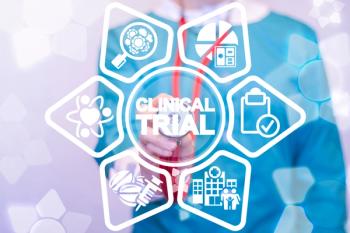
Technology Implications for the New ICH Addendum
The ICH is publishing its long-awaited guidelines on how to conduct clinical monitoring in trial management. Sponsors and CROs can integrate existing and emerging technologies while transforming their reactive oversight strategies to an RBM approach using these steps.
Five Steps to Ensuring Existing Technology Meets the Next-generation RBM Standard
This month, ICH publishes its long-awaited guidelines on how to conduct clinical monitoring in trial management.
An earlier consultative draft said: “The sponsor should develop a systematic, prioritized, risk-based approach to monitoring clinical trials… A combination of on-site and centralized monitoring activities may be appropriate…”
Trial sponsors and CROs can expect plenty of tough questions to be posed about whether their current technology platform can really support the next iteration of RBM. But don’t assume that your old technology platform is ready for the scrapheap and that investments in a completely new system are needed.
Sponsors and CROs can integrate existing and emerging technologies and transform their reactive oversight strategies to a more proactive RBM approach. The result? Compliance with evolving guidelines while reducing trial time and costs 15-20% – a win-win for all concerned.
New (and Old) Technologies Will Drive the Future
The average clinical trial currently uses as many as seven separate data collection systems. To get a complete picture of risk that also applies a holistic approach to RBM efforts, stakeholders will need to incorporate data from all these sources – as well as critical endpoint data.
But to meet the new demands on RBM created by industry expectations and ICH guidelines, sponsors and CROs will need to enhance existing systems as well as add new technology-driven functionality that includes integration, analytics and Key Risk Indicators (KRIs). This can be accomplished in five easy steps – steps well-worth taking when you consider the benefits.
- Eliminate manual data entry. The next generation of RBM technologies should have features that automate data sharing across systems so that information need only be entered once. This reduces the risk of human error, increases the data collection speed, and frees monitors to spend more time on value-driven activities.
- Provide analytics capabilities. An effective RBM solution has an analytics layer to drive risk identification and mitigation so that monitors can make decisions about risk in aggregate and rapidly deploy monitors to those sites that need support. The analytics capabilities in these systems should include customizable algorithms and dashboards to track specific trends and risk indicators â alerts that are automatically generated when sites fall out of compliance based on pre-set requirements â and suggested response actions to address identified risks.
- Define key risk indicators and risk score cards for specific trials and sites. Every trial faces a unique set of risks that change over the course of the trial. An effective RBM platform allows the sponsor and CRO to define KRIs and create weighted score cards that can be adapted to the cadence of the trial to more efficiently track risk indicators.
- Provide specific workflows for sites that fall outside the threshold for compliance. A state-of-the-art RBM platform links each risk to a specific workflow based on a pre-defined risk assessment plan, automatically schedules related mitigation activities, and generates follow-up reports when mitigation tasks are completed. This enduces the chance that mitigation tasks fall through the cracks.
- Simplify the relationship between sponsors and CROs. Relationships between sponsors and CROs have become more complex as a result of emerging global regulations, multiple stakeholders and myriad data sources. By leveraging next generation trial oversight and collaboration systems, sponsors and CROs can improve transparency, accountability and flexibility while achieving their shared and individual data integrity goals.
Conclusion
Although implementing the next generation of RBM technologies will require a significant change in the way organizations think about monitoring and mitigating risk in the trial environment, sponsors and CROs that take the time now to update their systems and transform their approach to risk management will gain significant efficiencies in time and cost savings while they enhance their ability to manage risk. There’s no reason to wait. Sponsors and CROs who adopt the benefits of centralized risk based monitoring can begin reaping the benefits and gaining a competitive advantage even before the ICH addendum goes into effect this month.
By Brion Regan, Product Manager, eClinical Insights, ERT
Newsletter
Stay current in clinical research with Applied Clinical Trials, providing expert insights, regulatory updates, and practical strategies for successful clinical trial design and execution.




